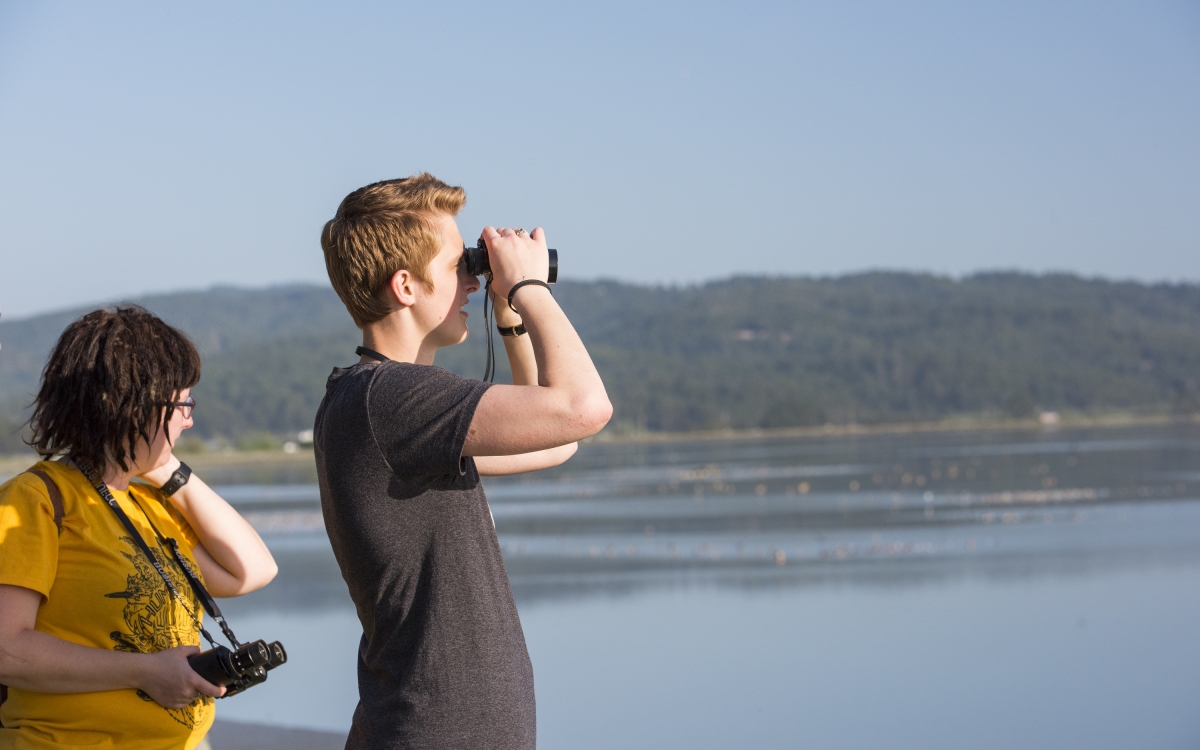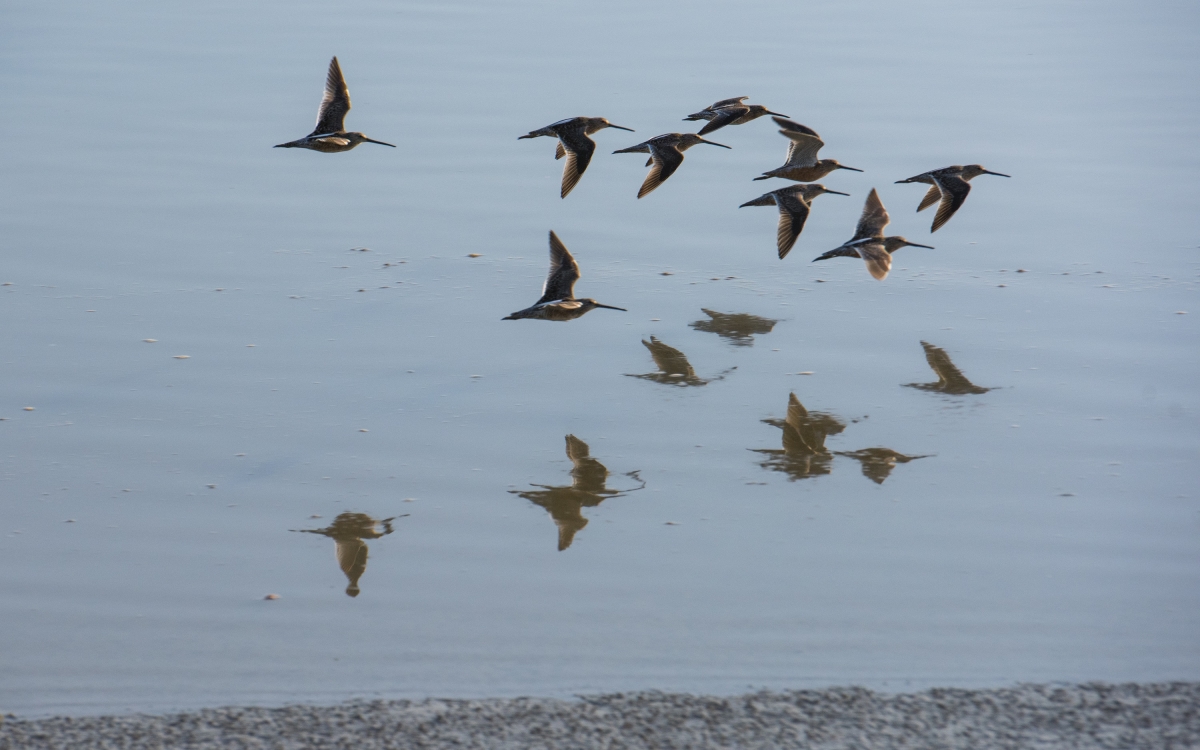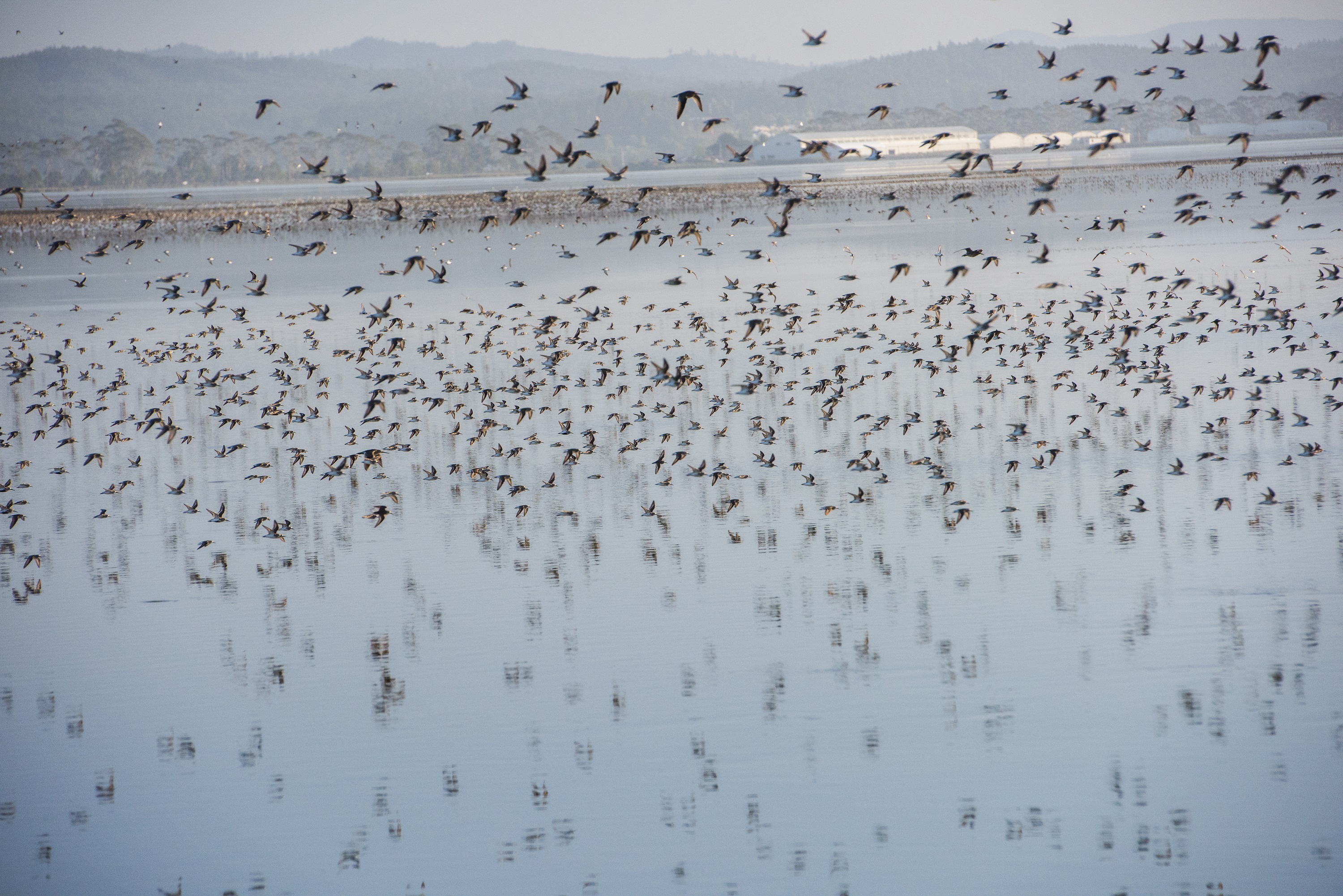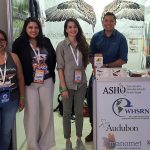Humboldt Bay in coastal northern California became a WHSRN site in September 1998 and is now celebrating its 20th year as an International Site. Now research published last month shows that the Humboldt Bay Complex WHSRN site hosts many more shorebirds than previously known. The study, which was conducted by Humboldt State University shorebird ecologist Dr. Mark Colwell and his team, and published in the August issue of Wader Study, conducted four surveys, 14 days apart, over 46 days. Observers surveyed high tide roosts in a 3 hour window around each high tide.
Western Sandpipers (Calidris mauri) are by far the most abundant species, with the new study estimating that there are 313,750 – 536,750 using the Bay. Twenty-five additional shorebird species account for another 192,982 birds using the Humboldt Bay Complex, combining to well over the 500,000 threshold for a Site of Hemispheric Importance. In addition to hosting Arctic-nesting shorebirds, the site is a wintering area for nine shorebird species either breeding locally or in the temperate interior including Long-billed Curlews (Numenius americanus), Marbled Godwits (Limosa fedoa), American Avocet (Recurvirostra americana), and Willets (Tringa semipalmata).
The Humboldt Bay Complex includes the bay and wetlands of the Eel, Elk, and Mad Rivers. A mix of federal, state, local, tribal, and private lands, there are many partners within the Bay – US Fish and Wildlife, Bureau of Land Management, California Department of Fish and Wildlife, City of Arcata, City of Eureka, County of Humboldt, Wiyot Tribal Council, and several nonprofits. The Bay has diverse habitat types including invertebrate rich tidal flats, eelgrass beds, salt marsh, rocky intertidal, dunes, and seasonally flooded agricultural fields, which have much to offer wildlife. The eelgrass beds are the largest intertidal between Willapa Bay, Washington, and Baja California, Mexico, which provide important food for Brant and cover for many species of marine and estuarine vertebrates and invertebrates.
This diverse array of habitats continues to be one of the key factors for the importance of the site. WHSRN status has helped to support and justify conservation efforts over the years. For example, a 250-acre salt marsh restoration project at the north end of Arcata Bay has added to the habitat. In 2013, levees were breached and waters were allowed to flood the grasslands, converting them to intertidal habitat including mudflats. It became a hotspot for shorebirds, and Western Sandpipers in particular. In the recent survey effort, birders noted high numbers of Western Sandpipers in mid-April, which prompted Colwell to undertake nine additional days of monitoring. These nine days at the Arcata Marsh account for the 313,750 – 536,750 Western Sandpipers using the Humboldt Bay Complex.


Photos: Kellie Brown
The improved understanding of the importance of Humboldt Bay also supports the ongoing work of site partners to address threats at the site. In 2016, Audubon California, Redwood Region Audubon, California Waterfowl, Earthjustice, and local community members worked together to prevent a proposed expansion of shellfish farming in the Bay, that would have degraded shorebird habitat and increased the level of disturbance. Site partners worked to emphasize to permitting agencies how important the region is to wildlife, particularly shorebirds. The Humboldt Bay Complex’s WHSRN designation was able to help tell this story to encourage continued protection of the habitat. Fortunately, partners were able to prevent the loss of 622 acres of eelgrass and other essential wetlands. The year-and-a-half effort culminated when the California Coastal Commission, the key permitting agency, denied expansion of shellfish farms into sensitive habitat for shorebirds. Now partners are striving to work collaboratively with the Humboldt Bay Harbor and Conservation District to ensure any future shellfish farm planning avoids important shorebird habitat. The excellent precedent set by the Coastal Commission, made possible in part by WHSRN status, bodes well for the future of this place. With thoughtful and innovative management, Humboldt Bay shows that shorebirds and people can share the space.

Photo: Kellie Brown.
You can learn more about Dr. Mark Colwell’s recent study at waderstudygroup.org
And if you want to see this place and its birds, mark your calendars for Godwit Days, April 17-23, 2019.
For more information on conservation efforts for the Bay, visit Audubon California’s Humboldt Bay page, or contact Anna Weinstein at aweinstein@audubon.org.






